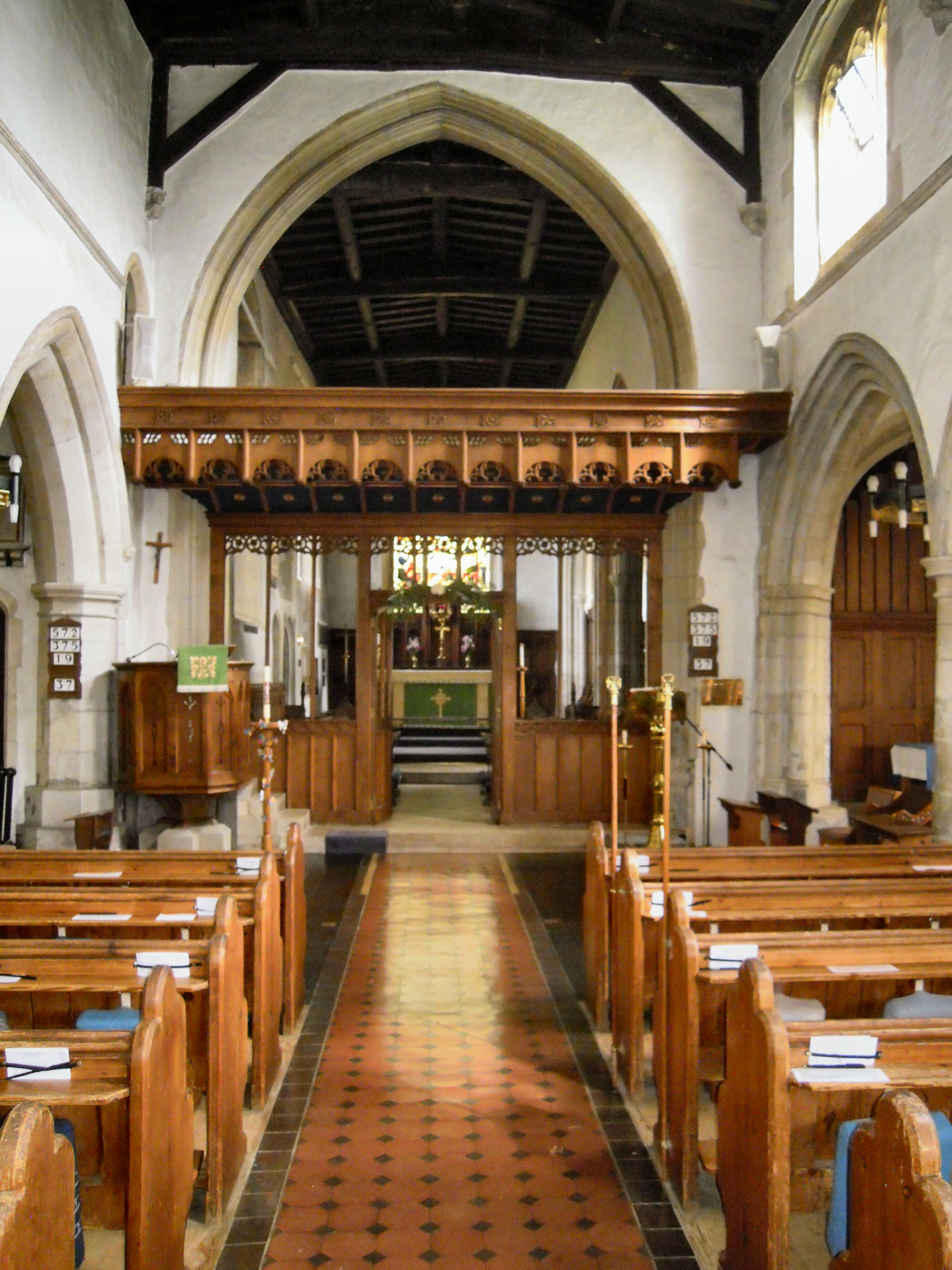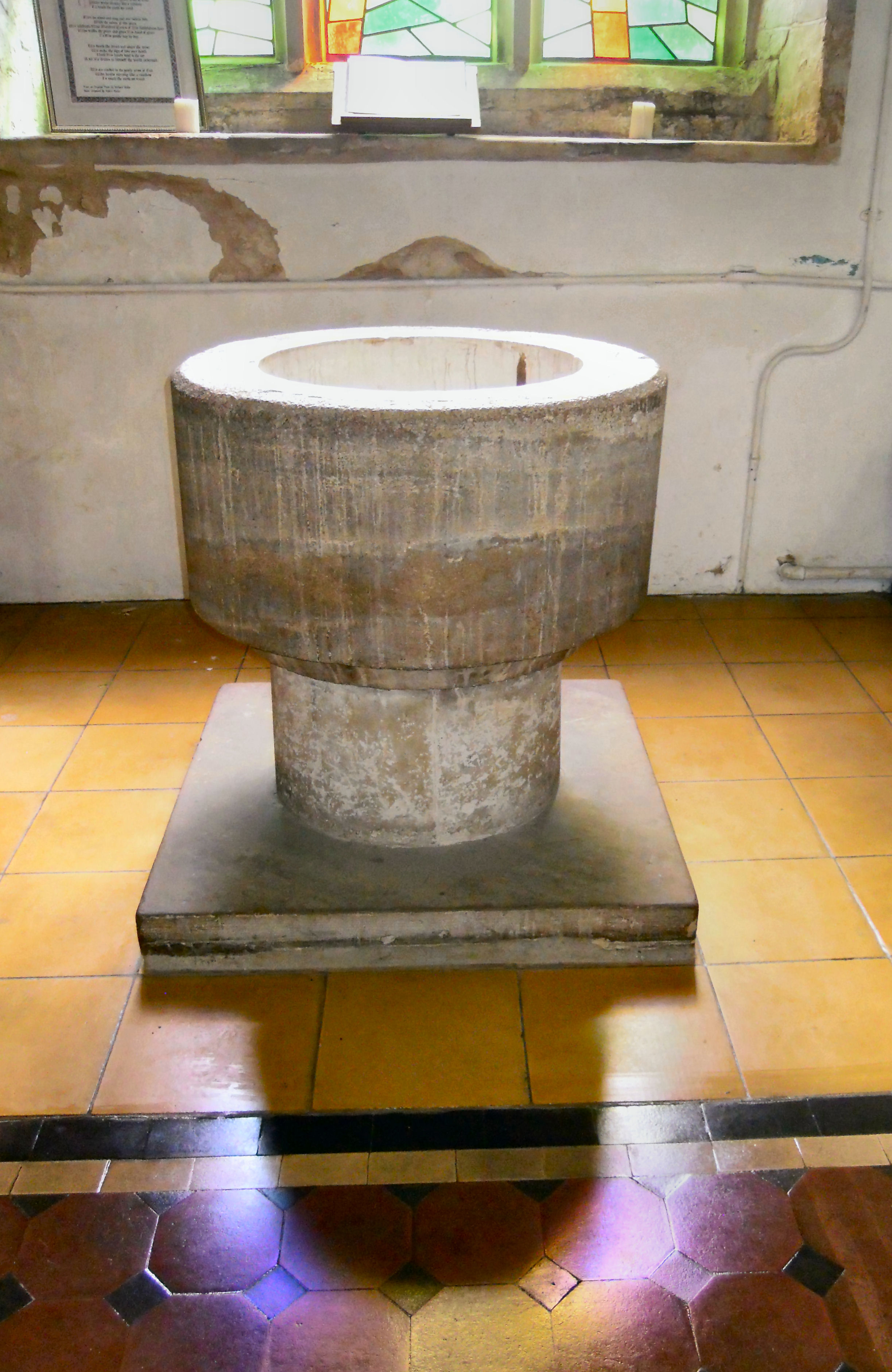Church of St Mary, Potton on:
[Wikipedia]
[Google]
[Amazon]
The Parish Church of St Mary is the


 There has been a church on the site since the 11th centurySt Mary's Church, Potton - Bedfordshire Parish Churches database
There has been a church on the site since the 11th centurySt Mary's Church, Potton - Bedfordshire Parish Churches database
Retrieved 7 February 2019. but the present structure is 13th-century in origin, with 14th-, 15th- and early 16th-century additions and is built of cobblestones and ironstone with

 The glass in the church is mainly
The glass in the church is mainly

St Mary's - Potton Parish Church
by Peter Loud {{DEFAULTSORT:Potton, Church of St Mary Grade I listed churches in Bedfordshire Church of England church buildings in Bedfordshire Potton
Anglican
Anglicanism is a Western Christian tradition that has developed from the practices, liturgy, and identity of the Church of England following the English Reformation, in the context of the Protestant Reformation in Europe. It is one of th ...
parish church for Potton
Potton is a town and civil parish in the Central Bedfordshire district of Bedfordshire, England, about east of the county town Bedford. Its population in 2011 was 4,870. In 1783 the Great Fire of Potton destroyed a large part of the town. The ...
in Bedfordshire. It has been a Grade I listed building since 1966 and comes under the Diocese of St Albans.
Design


 There has been a church on the site since the 11th centurySt Mary's Church, Potton - Bedfordshire Parish Churches database
There has been a church on the site since the 11th centurySt Mary's Church, Potton - Bedfordshire Parish Churches databaseRetrieved 7 February 2019. but the present structure is 13th-century in origin, with 14th-, 15th- and early 16th-century additions and is built of cobblestones and ironstone with
ashlar
Ashlar () is finely dressed (cut, worked) stone, either an individual stone that has been worked until squared, or a structure built from such stones. Ashlar is the finest stone masonry unit, generally rectangular cuboid, mentioned by Vitruv ...
dressings with a mixture of plain and embattled parapets. It has a chancel, South chapel, nave, North transept, North and South aisles, North porch and West tower. The chancel dates to the 13th century but was reworked in the 15th century; the chancel has a 19th-century pointed-arched three-light East window and a 16 arch two-bay South arcade. The North elevation has a square-headed three-light window to the East and a four-centre headed two-light window the West, both dating to the 15th century. Between these is a four-centred arched doorway with a small 13th-century lancet window above. Below the North East window is a piscina moved here from the North East vestry.
The South chapel dates to the 16th century and has two windows in the South and one East window, all of three lights. Originally there was a vestry to the north side of the chancel dating to the 15th century but this was demolished in the 16th century. The four-centred South doorway is 19th-century. The nave has elements dating to the 13th century but is mainly 14th-century in date and has five-bay 14th-century arcades to both sides; the South one is earlier in date with compound piers while the North arcade has octagonal columns. The clerestory
In architecture, a clerestory ( ; , also clearstory, clearstorey, or overstorey) is a high section of wall that contains windows above eye level. Its purpose is to admit light, fresh air, or both.
Historically, ''clerestory'' denoted an upper l ...
has five 15th-century square-headed windows to each side, all of two lights except for the South East one which has three lights.
The North transept is 13th-century in origin with the East elevation having a 15th-century three-light four-centre arched window, and a small window to the South East lighting inserted in the 15th-century rood screen
The rood screen (also choir screen, chancel screen, or jubé) is a common feature in late medieval church architecture. It is typically an ornate partition between the chancel and nave, of more or less open tracery constructed of wood, stone, or ...
stair. The North aisle is 14th-century reworked in the 15th century while the North doorway is 14th-century. The South aisle is 14th-century reworked in the 15th century. The West window and three South windows are all 15th-century. The North porch is 15th-century with a room above with two-light square-headed windows to the West and North and which is reached by stairs at the South East corner.
The West tower is 15th-century with a semi-circular stair turret projecting from the North East angle. The West elevation has a 19th-century pointed-arched doorway to the ground stage and a three-light four-centred arched window to the second stage. On the tower's North side the remains of a stone lamp holder are still visible about 12 feet up. The belfry level has pointed-arched two-light windows to all sides. All the roofs were repaired in the 19th century but retain much of the original moulded timbering with that to the South aisle being 14th-century, with those elsewhere being 15th and 16th century. The pews are 19th-century while the circular baptismal font
A baptismal font is an article of church furniture used for baptism.
Aspersion and affusion fonts
The fonts of many Christian denominations are for baptisms using a non-immersive method, such as aspersion (sprinkling) or affusion (pouring). ...
is of uncertain date. The East wall of the porch retains the indents of a memorial brass to a priest, with the central indent in the shape of a chalice.
The church was restored in 1889 by Somers Clarke and J. T. Micklethwaite John Thomas Micklethwaite (3 May 1843 – 28 October 1906) was an English architect and archaeologist. He had a long association with Westminster Abbey, and was noted for his criticisms of the current practices of church restoration.
Biography
He w ...
.''Beds Mercury'' 7 September 1889
Windows

 The glass in the church is mainly
The glass in the church is mainly Victorian
Victorian or Victorians may refer to:
19th century
* Victorian era, British history during Queen Victoria's 19th-century reign
** Victorian architecture
** Victorian house
** Victorian decorative arts
** Victorian fashion
** Victorian literature ...
in date and of little artistic merit. The East window consists of three lights containing glass depicting the Last Supper installed in 1888 in memory of James Wagstaff. The pair of windows in the West are 15th-century with a tall two light window and a single lancet-shaped window lower down. The larger of the windows was installed in 1865 in memory of the Rev George Bidwell and portrays the Nativity, Crucifixion and Resurrection of Christ with the figures of Christ and Mary Magdalene depicted in the Garden of Gethsemane.
The stained glass in the north window of the transept was installed in 1892 in memory of Elizabeth Wagstaff of Potton (1800-1892), the widow of the James Wagstaff who is similarly commemorated in the East window. The window depicts Christ in conversation with the Woman at the Well. The colourful modern glass in the central window of the South aisle depicting the Holy Spirit as a dove emerging from the rays of the sun above angel's trumpets was designed by Carl Russell and was installed in 1994 in celebration of 900 years of worship in the church,
References

External links
St Mary's - Potton Parish Church
by Peter Loud {{DEFAULTSORT:Potton, Church of St Mary Grade I listed churches in Bedfordshire Church of England church buildings in Bedfordshire Potton